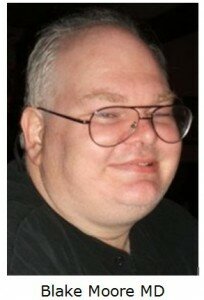13 Jul (COFFEE COUNTY, TENN) – Three years after attorney Ralph Bard MD filed a lawsuit against the Semmelweis Society International (SSI) Board of Directors, Coffee County Circuit Court Judge Vanessa Jackson has dismissed the complaint. Bard filed the lawsuit in December 2008 against SSI Board Members after they found Bard and his associates guilty of misconduct. The SSI Board revoked his membership, along with those of Lokesh Vuyyuru MD, Henry Butler MD, Blake Moore MD and George Holmes PhD.
 Their lawsuit was destined to fail from the beginning.
Their lawsuit was destined to fail from the beginning.
Having been fined for filing frivolous lawsuits in the past, doctors Vuyyuru and James Murtagh MD aided the plaintiffs by taking on supporting roles: While Vuyyuru posted a series of fake SSI websites and documents, Murtagh used his experience as a perjurer to file additional worthless documents.
For his part, Bard filed his own “document dump” on December 1st, 2008 and waited until December 3rd to mail it, ensuring its late arrival on December 6th. Although the SSI Board had until January 5th (30 days) to respond, Bard falsely claimed that he filed his complaint on November 28 and that the Board failed to respond in a timely manner. He then used his false claim to ask for a judgment against the Board – the first of many motions the court denied.
Bard’s meritless lawsuit is the preferred method used by corrupt organizations to retaliate against honest individuals. The book Crime & Corruption in Organizations (Burke, 2011) describes how drug giant Bristol-Myers Squibb (BMS) retaliated after the Canadian Coordinating Office for Healthcare Technology Assessment (CCOHTA) reported that all statins were the same. BMS sued to prevent the release of the report and eventually lost; but the lawsuit kept the report from consumers for more than a year and eventually cost CCOHTA 13 percent of its annual budget. For CCOHTA and the SSI Board, it would have been less expensive to acquiesce to the corruption.
Surprisingly for the Plaintiffs, SSI’s Board didn’t surrender.
As the lawsuit entered 2009, Bard’s handling of the case soon became a liability to his clients. Finding their attorney way over his head, Bard’s clients replaced him with attorneys Glenn Goodheart and Steve Gibson. But after two years of delays, excuses and false charges, Judge Jackson rejected their complaints and ordered both sides to schedule a court trial – a venue that Bard’s nefarious cohorts did not want to appear.
As expected, attorneys Gibson and Goodheart bailed, leaving “Commander” Butler clinging by his fingernails; while Dr. Moore demanded sanctions against them for their “unethical and unprofessional behavior” that had, according to Moore, “irreversibly poisoned (their) attorney-client privilege.”
THE CONFLICT
 The conflict began in May 2008, when the SSI leadership presented its 2008 Clean Hands Award to investigative reporter Celia Farber and UC Professor Peter Duesberg PhD. SSI President Roland Chalifoux DO and Gil Mileikowski MD presented the awards for their “courage and self-sacrifice in safeguarding patient care by exposing instutional abuse in the medical community.” Having exposed HIV-related corruption since the 1980s, the careers and reputations of Farber and Duesberg suffered greatly for their refusal to compromise their integrity in the face of industry and government pressure.
The conflict began in May 2008, when the SSI leadership presented its 2008 Clean Hands Award to investigative reporter Celia Farber and UC Professor Peter Duesberg PhD. SSI President Roland Chalifoux DO and Gil Mileikowski MD presented the awards for their “courage and self-sacrifice in safeguarding patient care by exposing instutional abuse in the medical community.” Having exposed HIV-related corruption since the 1980s, the careers and reputations of Farber and Duesberg suffered greatly for their refusal to compromise their integrity in the face of industry and government pressure.
Hours before they were scheduled to receive their awards, pharmaceutically-funded activists pressured the SSI Board to rescind the awards. While the Board faced the attacks, many of its members left in fear – serving as a cowardly metaphor for a large majority of the healthcare and pharmaceutical industries.
The attacks were part of a larger strategy articulated by self-described “Truthers” that included John Moore PhD and Nathan Geffen.
While Professor Moore threatens to crush enemies like filmmaker Brent Leung, Geffen trafficked the deadly toxin Fluconazole to South Africa’s black population as a life-saving HIV drug. According to the warning label, Fluconazole causes rashes, lesions and liver diseases, destroying liver function, crippling babies and killing their mothers.
After Harper’s Magazine published Farber’s explosive report about a similar drug, Moore and Geffen formed the South African blog AIDSTruth and lectured journalists about how to attack “denialists” like Farber and Duesberg at forums like this 2006 Kaiser Healthcare Conference.
IGNAZ SEMMELWEIS
For centuries, puerperal fever was a devastating disease that affected women within the first three days after childbirth. The disease typically caused severe abdominal pain, high fever and death.
In 1847, Hungarian physician Ignaz Semmelweis (1818–1865) discovered that incidence of the disease could be significantly reduced if obstetrical clinics imposed hand-washing standards for their clinicians.
Because hand-washing was not considered the medical “standard of care” at the time, the world’s top academics, scientists and medical experts rejected Dr. Semmelweis’ claims and dismissed him as a disruptive medical quack.
For nearly two decades, the “medical consensus” relentlessly ridiculed and harassed Dr. Semmelweis. Eventually, his wife and friends grew concerned that he was losing his mind and, in 1865, sent him to an asylum (mental institution).
Two weeks later, Dr. Semmelweis was dead.
Thirty years after his death, hand-washing earned widespread acceptance when Louis Pasteur offered his theoretical explanation for Dr. Semmelweis’ findings.
Since then, the Semmelweis reflex (or effect) has become a metaphor for academics, researchers and clinicians who reject new information when it contradicts established norms, beliefs and paradigms that are embraced by “the consensus” or “medical community.”
THE MEDICAL “STANDARD OF CARE”
 For those who think that modern healthcare has outgrown the small-mindedness of Dr. Semmelweis’ contemporaries, consider the case of doctors Barry Marshall and Robin Warren who discovered in 1982 that the bacterium, Helicobacter pylori, causes peptic ulcer disease. These poorly-funded doctors worked against industries that generated huge profits from ineffective drugs and unnecessary surgeries prescribed to desperate patients. If doctors Marshall and Warren were allowed to prove their theory, their low-cost solution threatened billions of dollars in lost revenue for the medical and pharmaceutical industries.
For those who think that modern healthcare has outgrown the small-mindedness of Dr. Semmelweis’ contemporaries, consider the case of doctors Barry Marshall and Robin Warren who discovered in 1982 that the bacterium, Helicobacter pylori, causes peptic ulcer disease. These poorly-funded doctors worked against industries that generated huge profits from ineffective drugs and unnecessary surgeries prescribed to desperate patients. If doctors Marshall and Warren were allowed to prove their theory, their low-cost solution threatened billions of dollars in lost revenue for the medical and pharmaceutical industries.
In 1984, Marshall drank a culture of H. pylori and later came up with combinations of drugs that killed the bacteria and eliminated ulcers permanently. His efforts earned him the Nobel Prize (2005).
This is the same period and environment that Duesberg and Farber first exposed the widespread incompetence and corruption that permeates HIV and AIDS.
The “medical standard of care” means that if 99 cancer doctors administer rat poison to patients and one doctor offers non-toxic solutions, the 99 – aided by the healthcare and pharmaceutical industries – typically attack the alternative as a quack.
Primary factors that reinforce this standard of care include:
- Clinicians who don’t want to be told that their treatments injure or kill patients, and;
- Clinicians who hope to avoid malpractice lawsuits;
Secondary factors:
- Sick patients generate more revenue than healthy patients;
- Drug companies and hospitals don’t want to jeopardize revenues;
- Universities, the media, medical boards and journals are reluctant to jeopardize millions of dollars in pharmaceutical and healthcare revenues that promote and enforce “the medical standard of care;”
When the “Semmelweis effect” occurs in laboratories, research funding is wasted. When it occurs in hospitals, patients die. As marketing expert J. Scott Armstrong demonstrated in 1977, drug and healthcare companies will typically injure and kill patients to protect corporate revenues. Then, in a process akin to serial killers whose cardboard images are allowed to surrender to authorities, CEOs create shell companies to plead guilty for them.
British economist Alan Maynard notes that:
Economic theory predicts that firms will invest in corruption of the evidence base wherever its benefits exceed its costs. If detection is costly for regulators, corruption of the evidence base can be expected to be extensive. Investment in biasing the evidence base, both clinical and economic, in pharmaceuticals is likely to be detailed and comprehensive, covering all aspects of the appraisal process. Such investment is likely to be extensive as the scientific and policy discourses are technical and esoteric, making detection difficult and expensive. (Maynard 2001)
VERNER WAITE MD
 In 1979, physicians of St. Francis Medical Center (California) targeted Verner Waite MD after he refused to pad his bills with questionable insurance reimbursements as recommended. For his “poor judgment,” the hospital’s chiefs of staff and surgery threatened to suspend Dr. Waite’s clinical privileges. Their efforts derailed when Dr. Waite sued. A Los Angeles judge eventually awarded Dr. Waite $500,000, characterizing the hospital’s peer review process as a kangaroo court.
In 1979, physicians of St. Francis Medical Center (California) targeted Verner Waite MD after he refused to pad his bills with questionable insurance reimbursements as recommended. For his “poor judgment,” the hospital’s chiefs of staff and surgery threatened to suspend Dr. Waite’s clinical privileges. Their efforts derailed when Dr. Waite sued. A Los Angeles judge eventually awarded Dr. Waite $500,000, characterizing the hospital’s peer review process as a kangaroo court.
Threatened by this case and other potential lawsuits, healthcare lobbyists paid millions for protection from lawsuits like Dr. Waite’s. In 1986, Congress passed the cynically-titled Health Care Quality Improvement Act (HCQIA pron. HICK-WA). Promoted as a victory for “patient safety,” HCQIA subsequently indemnified thousands of corrupt doctors and administrators who target competing clinicians and those who expose corruption, fraud and dangerous doctors within the healthcare system.
Recognizing this legislation as a new threat, Dr. Waite founded the Semmelweis Society (1986). During the next 20 years, he became an influential advocate for fair medical peer review (1994) and called for the end of what he called sham peer review (SPR).
NOT ALL PEER REVIEWS ARE SHAMS
Like prison inmates, appropriately disciplined doctors often blame medical boards and patients when stripped of their clinical privileges.
For example, plaintiff Blake Moore MD joined SSI, with claims that he was a victim of SPR and that the Williamsburg Regional Hospital had no right to prevent him from examining children, even after the 4th Circuit Court found a “preponderance of evidence” that Dr. Moore had sexually molested his daughter.
Like Moore, former SSI member Lokesh Vuyyuru MD sued the Virginia Medical Board when they suspended his privileges for killing a mentally disabled patient and performing unnecessary ERCP procedures on numerous patients – including a 104-year-old woman. According to court documents, Dr. Vuyyuru left one 36-year-old woman in a vegetative state and interrupted another procedure to take a phone call and a short nap. Court records also showed that he assaulted another patient and refused to care for a bleeding suicidal patient because he wasn’t officially “on-call.”
 In 2011, US District Court Chief Justice James Spencer characterized Vuyyuru as a vexatious litigant and ordered him to ask for permission from the Court before filing any future lawsuits – which probably explains why Vuyyuru did not join Bard lawsuit.
In 2011, US District Court Chief Justice James Spencer characterized Vuyyuru as a vexatious litigant and ordered him to ask for permission from the Court before filing any future lawsuits – which probably explains why Vuyyuru did not join Bard lawsuit.
Instead, Dr. Vuyyuru created several bogus SSI websites that identified Bard’s associates as SSI board members despite corporate records. Although Vuyyuru could have incorporated his own organizations in Virginia, there is no evidence that he made any effort to do so. Instead, he repeatedly filed fraudulent papers in Tennessee claiming to be SSI’s registered agent before filing fraudulent articles of dissolution.
A MILLION CASUALTIES
In the absence of effective independent oversight, conservative estimates indicate that more than a million Americans are killed or injured every year by dangerous and unethical physicians and that between two to four million Americans are killed or seriously injured from drugs that are properly prescribed. But because the healthcare industry profits from adverse drug reactions (ADR) and preventable errors and complications, malpractice caps and HCQIA continue to leave patients and taxpayers vulnerable to unnecessary tests and procedures, fraud, injury and death. But because ADRs and bad doctors generate revenues, hospitals have few incentives to remove dangerous doctors. In California alone, more than 700 doctors were sanctioned for misconduct but were never disciplined. And when patients die from deadly drugs and procedures, the treating physician is usually the one who identifies the cause of death. Understandably, few doctors admit that their care and prescriptions are responsible for the preventable injuries and deaths they cause.
For these reasons, it is no surprise that miscreants like Moore, Murtagh, Kuritzky and Vuyyuru are represented by lawyers like Ralph Bard.
RALPH BARD, MD, JD
One year before his license was suspended for injuring and killing patients, Ralph Bard MD called Dr. Waite, ostensibly to support is effort to end sham peer review (SPR). Then, months before the Tennessee Medical Board suspended his license in 2004, Dr. Bard incorporated his own Semmelweis Society International (SSI) in Tennessee.
 Documents filed in their 2008 lawsuit reveal how “retired” practitioners like Bard exploited the names of doctors Waite and Semmelweis to attract vulnerable victims of SPR to his incipient law practice. Bard charged other lawyers to advertise on the non-profit website. Despite repeated discovery requests, Bard’s clients failed to produce financial records that explained revenue sources or how they were spent. There was no evidence that Bard or his clients ever reported what may have been illicit or unethical sources of income gained under the pretext of SSI’s “public benefit non-profit corporation.”
Documents filed in their 2008 lawsuit reveal how “retired” practitioners like Bard exploited the names of doctors Waite and Semmelweis to attract vulnerable victims of SPR to his incipient law practice. Bard charged other lawyers to advertise on the non-profit website. Despite repeated discovery requests, Bard’s clients failed to produce financial records that explained revenue sources or how they were spent. There was no evidence that Bard or his clients ever reported what may have been illicit or unethical sources of income gained under the pretext of SSI’s “public benefit non-profit corporation.”
As impressive as Bard’s “MD JD” letters appear, seasoned attorneys understand the dangers of inexperienced lawyers whose egos are fueled by an unethical physician’s “God Syndrome.”
Coupled with what the Tennessee Medical Board characterized as Bard’s “unprofessional, dishonorable or unethical conduct… and “pattern of gross malpractice, ignorance, negligence and incompetence…” the record shows that Ralph Bard influenced the culture and character of SSI leadership from 2003 until 2007-2008, when members elected Roland Chalifoux DO, Saundra Counce RN and Patrick Campbell MD to their first terms as SSI President, Vice President and Secretary, respectively.
Unlike SSI’s previous directors, these new officers were among SSI’s first credible Board members. Those three – along with Howard University professor George Holmes PhD and ex-officio attorneys William Hinnant MD JD and Bard – comprised the SSI Board in May 2008.
But when SSI presented its “Clean Hands” awards to Celia Farber and Peter Duesberg, Bard’s scam began to unravel.
Almost immediately, James Murtagh MD, Kevin Kuritzky (supported by Moore, Butler and Vuyyuru) assailed the SSI board, members and associates with unsolicited email “flames,” demanding that the awards be rescinded. (In 2014, Kuritzky admitted to these facts in this notarized declaration.)
Their behavior was no surprise.
After being cited for poor attendance, plagiarism and psychological problems, Kevin Kuritzky dropped out medical school because of “poor academic performance” and “personal issues” that led to things like unauthorized pelvic exams of female patients. An associate dean testified that he didn’t believe anything Kuritzky told him. He was eventually expelled and, after years of litigation, an appellate court dismissed his claims. Sources allege that he left the US briefly to study medicine in Israel under the name David Regev before returning to the US.
After being found unfit to care for patients, disgraced Emory Medical School professor James Murtagh MD filed eleven frivolous lawsuits (including Irish-discrimination) and was later cited and fined by the court for contempt, perjury, issuing false and defamatory emails in other people’s names, altering evidence, identity theft and tax fraud.
This could explain why Kuritzky and Murtagh went into hiding after Celia Farber sued Murtagh, Kuritzky, and Richard Jefferys for defamation in 2009. After Farber and Duesberg received the “Clean Hands Award” in 2008, Jefferys targeted SSI and its supporters and funneled pharmaceutical funding through South Africa to Murtagh’s associates, who happily obliged.
SSI Secretary Patrick Campbell MD almost immediately resigned his post. After almost losing his career for exposing widespread corruption at Redding Hospital, he had endured enough grief for one career.
During these coordinated attacks, it was unclear to the Board why SSI co-counsel Bard and Hinnant compromised their defense of SSI’s newly-elected Board members until, after repeated inquiries, they finally disclosed their representation of two of SSI’s primary attackers. In explaining his conflict of interest, Hinnant disclosed a $100,000 debt incurred while defending Moore from child molestation charges, and Bard said he represented Kuritzky.
For these and other reasons, the SSI Board revoked the memberships of doctors Bard, Butler, Vuyyuru and Moore – relieving Hinnant of his position as counsel and ex-officio board member.
THE SEMMELWEIS REPORT
Because of the serious nature of Murtagh and Kuritzky’s allegations against Duesberg and Farber, SSI President Chalifoux asked Clark Baker to examine the charges. In less than two months, the retired LAPD officer established that the pharmaceutically-funded allegations against Farber and Duesberg were false. When Baker reported his findings in July of 2008, the SSI Board unanimously accepted the report and appointed him and Terry Bennett MD, MPH to its Board.
As part of the new Board’s effort to clean house, Directors Chalifoux, Counce, Bennett and Baker ordered then-SSI Webmaster/Treasurer George Holmes PhD to modify the SSI website and surrender SSI’s questionable financial and membership records. When Holmes refused, the Board relieved him and took control of the website and bank account.
Despite repeated discovery requests, Dr. Holmes has never released any of those financial records, nor has he produced evidence that SSI ever reported it’s income or assets.
THE FUTURE OF SEMMELWEIS
Although SSI’s Board has prevailed in the lawsuit, their defense of Celia Farber, Peter Duesberg was costly. The names of doctors Semmelweis and Waite continue to be perverted and exploited on cheap websites hosted or supported by Vuyyuru, Butler and their acolytes. Until the corruption that permeates the drug and healthcare industry is ended, it could take decades before the names of doctors Verner Waite and Ignaz Semmelweis can be rehabilitated and restored by credible healthcare advocates. SSI also inherited Bard’s many unethical corporate and financial liabilities.
Because SHAM PEER REVIEW (SPR) remains the enforcement mechanism of healthcare corruption; and because the defense of clinicians falsely accused of misconduct falls within OMSJ’s mission, OMSJ intends to safeguard the names of Ignaz Semmelweis and Verner Waite until suitable candidates offer a way to rehabilitate their names. In the meantime, SSI has ended operations. Future inquiries about sham peer review defense can be directed to OMSJ.
UPDATE, 10 Oct 2014: Kevin Kuritzky declares that, between 2005-2013, he has served as a “foot soldier” for Murtagh, Seth Kalichman, and AIDSTruth with the specific purpose of attacking, discrediting, and marginalizing so-called “AIDS denialists” to protect the AIDS industry.



















